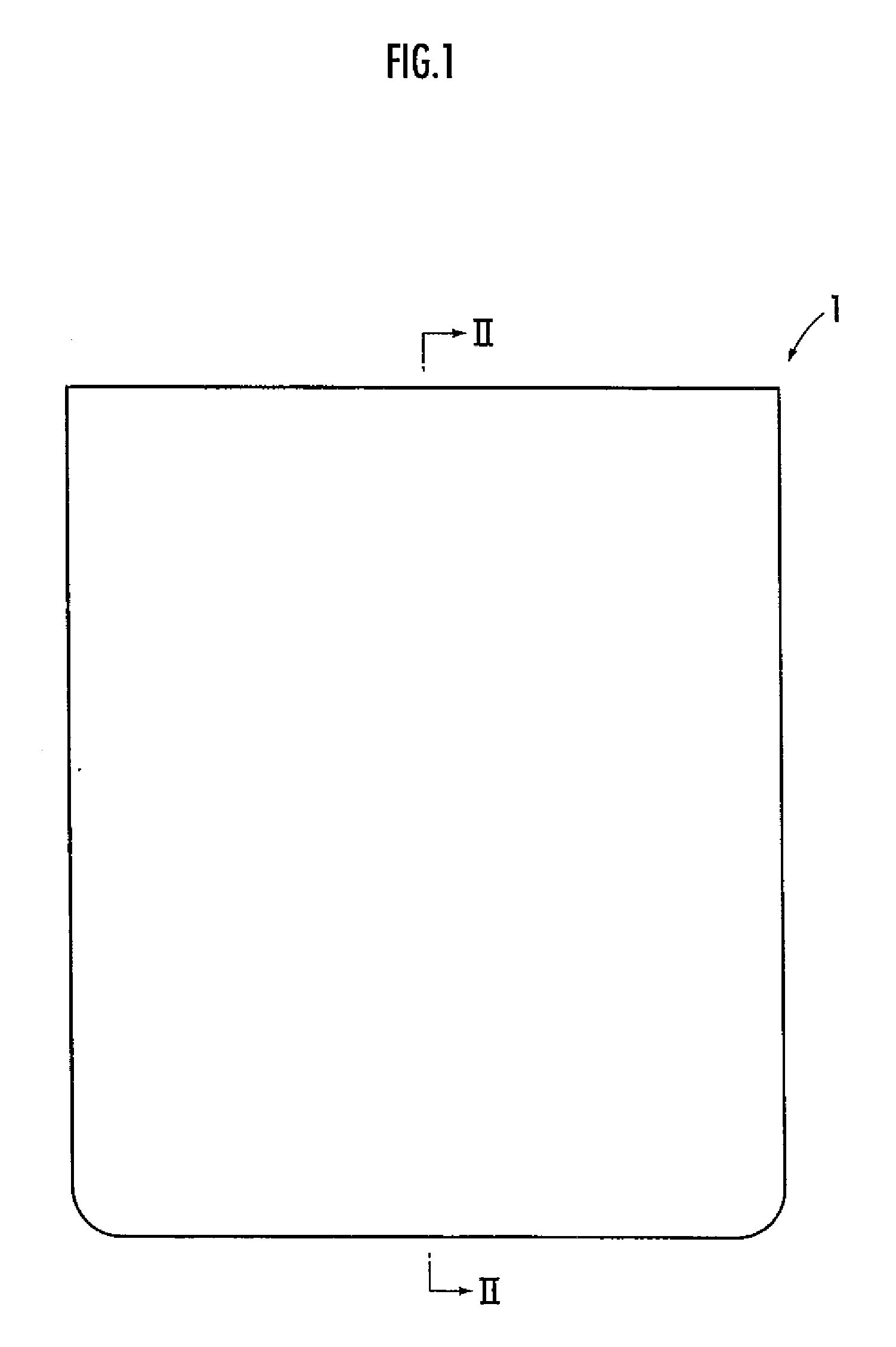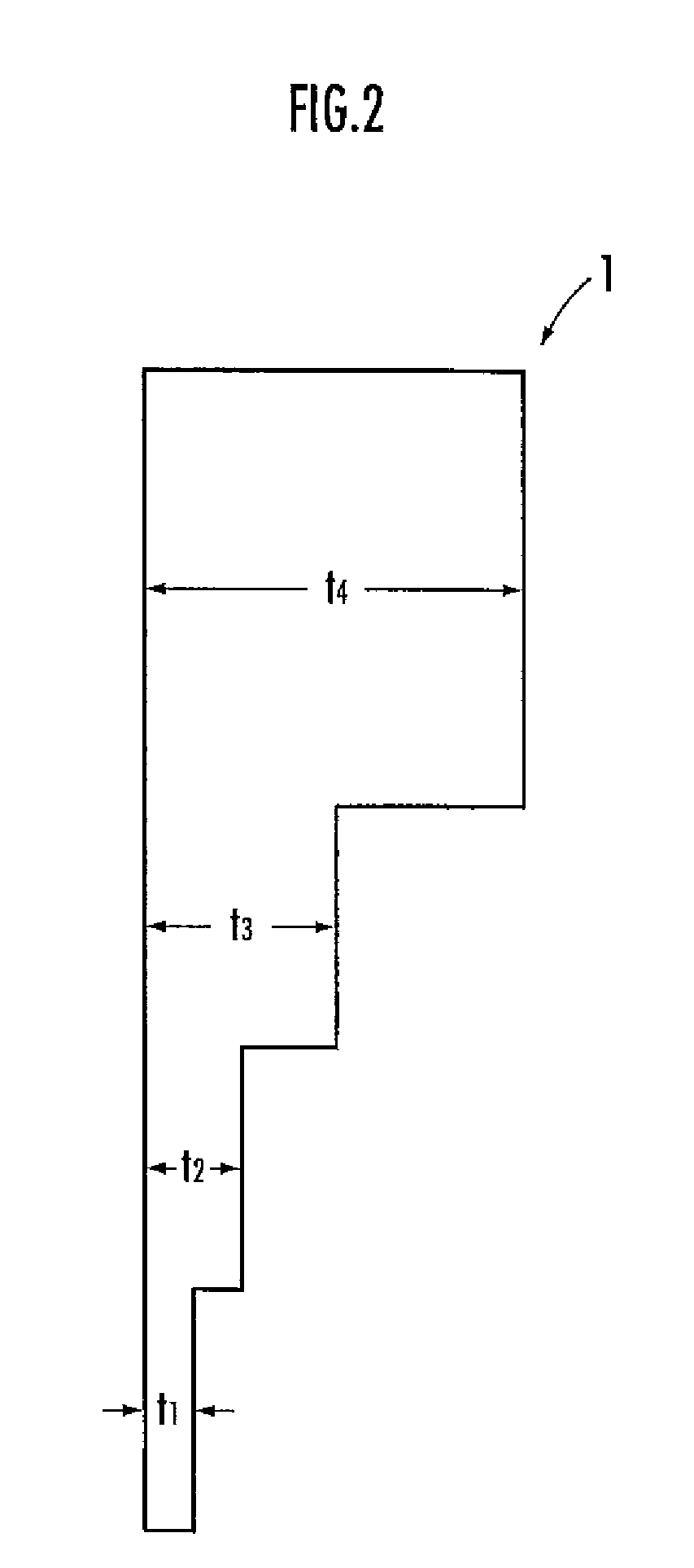Heat resistant magnesium alloy and production process thereof
- Summary
- Abstract
- Description
- Claims
- Application Information
AI Technical Summary
Benefits of technology
Problems solved by technology
Method used
Image
Examples
examples 1 to 4
[0024]In present Examples, a molten alloy was obtained by melting at a temperature of 850° C. a metal material including, in relation to the total amount of the metal material, 2 at % of Zn, 2 at % of Y, 0.2 at % of Zr and 95.8 at % of Mg. In the molten alloy, the composition ratio Zn / Y between Zn and Y was 1.0.
[0025]Next, by means of gravity casting, the obtained molten alloy was poured into a mold made of oxygen-free copper (C1020, purity: 4N) to yield a cast product of a heat-resistant magnesium alloy. This casting was conducted while the molten alloy was being maintained at temperatures within a range from 800 to 850° C.
[0026]As shown in FIG. 1, a cast product 1 obtained in present Examples was, as viewed in plan, rectangular and of a size of 46 mm×56 mm. Additionally, as shown in FIG. 2, the thickness of the cast product 1 was varied stepwise from t1 to t4 along the long side, wherein t1=2 mm (Example 1), t2=4 mm (Example 2), t3=8 mm (Example 3) and t4=16 mm (Example 4).
[0027]T...
example 5
[0034]In present Example, a 2-mm-thick cast product was obtained in exactly the same manner as in Example 1 except that a metal material including, in relation to the total amount of the metal material, 1.2 at % of Zn, 1.2 at % of Y, 0.2 at % of Zr and 97.4 at % of Mg was used. In the molten alloy obtained by melting the metal material, the composition ratio Zn / Y between Zn and Y was 1.0. The cooling rate of the cast product was 668 K / sec.
[0035]Next, a specimen 2 having the shape shown in FIG. 4 was cut out from the cast product obtained in present Example, and subjected to the measurements of the tensile strength and the elongation in exactly the same manner as in Example 1 except that the specimen 2 was heated in air to 250° C. by induction heating. The results thus obtained are shown in Table 1.
example 6
[0036]In present Example, a 2-mm-thick cast product was obtained in exactly the same manner as in Example 1 except that a metal material including, in relation to the total amount of the metal material, 3 at % of Zn, 3 at % of Y, 0.2 at % of Zr and 93.8 at % of Mg was used. In the molten alloy obtained by melting the metal material, the composition ratio Zn / Y between Zn and Y was 1.0. The cooling rate of the cast product was 668 K / sec.
[0037]Next, a specimen 2 having the shape shown in FIG. 4 was cut out from the cast product obtained in present Example, and subjected to the measurements of the tensile strength and the elongation in exactly the same manner as in Example 1 except that the specimen 2 was heated in air to 250° C. by induction heating. The results thus obtained are shown in Table 1.
PUM
| Property | Measurement | Unit |
|---|---|---|
| Temperature | aaaaa | aaaaa |
| Temperature | aaaaa | aaaaa |
| Temperature | aaaaa | aaaaa |
Abstract
Description
Claims
Application Information
 Login to View More
Login to View More - R&D Engineer
- R&D Manager
- IP Professional
- Industry Leading Data Capabilities
- Powerful AI technology
- Patent DNA Extraction
Browse by: Latest US Patents, China's latest patents, Technical Efficacy Thesaurus, Application Domain, Technology Topic, Popular Technical Reports.
© 2024 PatSnap. All rights reserved.Legal|Privacy policy|Modern Slavery Act Transparency Statement|Sitemap|About US| Contact US: help@patsnap.com










